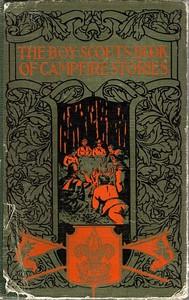Read this ebook for free! No credit card needed, absolutely nothing to pay.
Words: 110044 in 47 pages
This is an ebook sharing website. You can read the uploaded ebooks for free here. No credit cards needed, nothing to pay. If you want to own a digital copy of the ebook, or want to read offline with your favorite ebook-reader, then you can choose to buy and download the ebook.


: Some Naval Yarns by Hall Mordaunt Beatty Ethel Contributor - World War 1914-1918 Naval operations; Great Britain. Royal Navy World War I
PAGE PREFACE v
SOME NAVAL YARNS
SOME NAVAL YARNS
Men of the British services are exasperatingly modest. You are forced to wring stories of experiences from them, and when you are thrilled to the core over their yarns they coolly inform you that their names must not appear. Fortunately, there is something about a story which "rings true." From one of the soundest pilots of the Royal Naval Air Service I heard his experience of the previous day. We will call him "Q," as he happens to be known in the station. It is his middle initial. He is a tall, well-built man of thirty, who knows a seaplane backwards, and it has been woe to the enemy when he met him.
"We started at dawn," he began. "There's not much flying in the dark, only occasionally. First, we ran the machine out of the hangar, and, as usual, tried the engines. In the fading darkness or growing light it is a great sight to see the flames flashing from the exhaust. In the beginning you run your engines slowly. Yesterday one of them kicked a bit. The cause for the hitch was discovered, and they were once more started. Remember that it is expedient that the engines be thoroughly tested before a flight, as you may spend anxious hours if something goes wrong. The spluttering ended, and we ran them up to full speed. This done, we waited for more light before hauling the machine down to the water. Once the seaplane was water-born, we taxied ourselves across the port at moderate speed. As we rose in the air we had to be careful of the masts of the ships in the harbour, especially as it was foggy. We then opened up the engines, and the seaplane rose. It was very thick, so we kept 300 feet above the water, flying on a course. There were two pilots and an observer in the machine. Our next work was to estimate the velocity of the wind. This is always rather difficult, and, at the same time, it is most important to have an accurate estimate of the wind. We steered ahead, hoping to see a mark which would guide the observer in his course; but because of the fog, we were not able to pick up our mark. Hence we had to go on and hope for the best.
"We flew higher, about 1,500 feet, and the clouds were about 800 feet, so we were far above them. For two and a half hours we steered straight ahead on the lonely fog-covered sea. We were to meet some warships which expected us. But even after covering all that distance, we saw nothing at all, and therefore resolved to descend and see what prospects there were of 'landing' and saving our engines. The sea always appears calm to the man flying above it; and even when we were 30 feet only above the water we could not tell whether or no it would be dangerous to the machine to 'land.'
"We then picked up a mark and set off on our course for the rendezvous. So dense was the mist that we could not see more than one and a half miles ahead. However, we raced along at 70 knots on our new course, and in twenty minutes came in sight of the flotilla of warships spread out below in fan-like form, but all moving fast. These ships, you see, keep on the move; but they stay for the time being near the point selected for the meeting. Instructions were signalled to us, and we came up, and flew nearer and nearer the water.
"'Can we land?' was our first question. 'Land' is always used by a seaplane pilot even if there is no land within a hundred miles of him. Our aerial had been thrown out. It was too rough to go on the water--or, at least, not worth risking damage to the seaplane. We carried on our conversation partly by shouting and partly by signals, which were quickly understood. From the ships we received further instructions, and sped on to carry them out. We had no further difficulties, and reached home just before sunset."
As an illustration of modern warfare, and the fact that single British flyers are feared even by two of the enemy's planes, here is a story told by a young Englishman, who knows no nerves when he is in the air, no matter how near he comes to being snuffed out by the shrapnel and bullets. He is a man of 5 feet 10 inches, with clear blue eyes and blond hair--one of those truth-loving Britishers who prefers to err against himself in his reports rather than tell of an uncertainty as a certainty.
"'Saw and attacked a German submarine, which dived before we could close in on her,'" read this man from a log-book. He turned the pages, and a little afterwards came on this:--
"That reminds me," he said, looking up from the little book which held the notes of so many exciting events. "They sent me out then when I ought to have been off duty."
He smiled, as did his hearers.
Free books android app tbrJar TBR JAR Read Free books online gutenberg
More posts by @FreeBooks

: A History of Lumsden's Battery C.S.A. by Little George Maxwell James Robert - United States History Civil War 1861-1865 Campaigns; Confederate States of America. Army. Lumsden's Battery; United States History Civil War 1861-1865 Regimental histories Lumsde


: Punch or the London Charivari Volume 104 May 6 1893 by Various Burnand F C Francis Cowley Editor - English wit and humor Periodicals Punch






